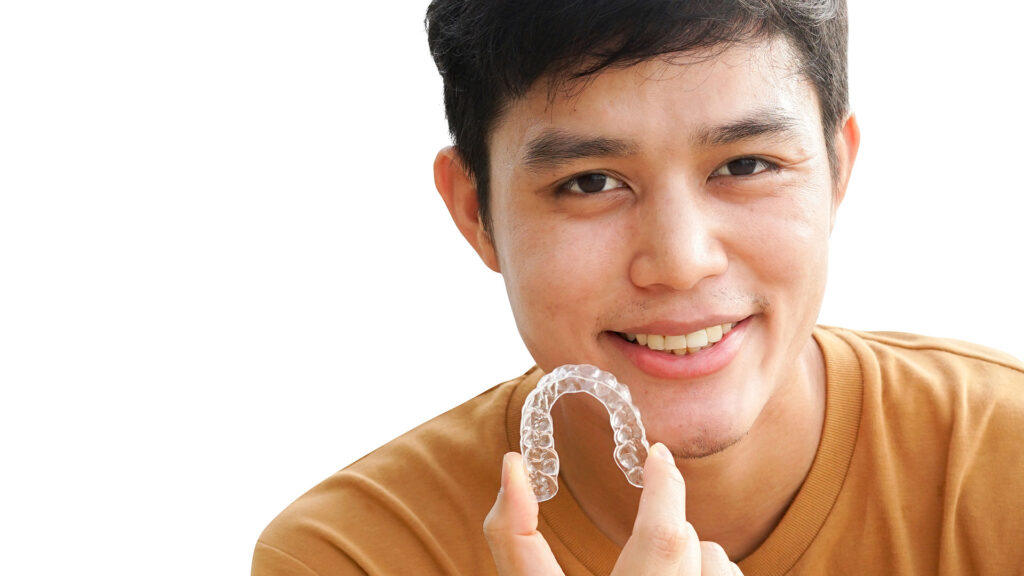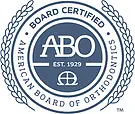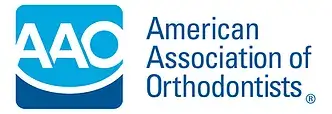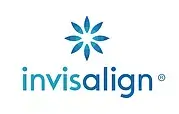Considering orthodontic treatment to improve your smile? Invisalign may be a suitable option for you. In this article, we will provide an in-depth analysis of the pros and cons of Invisalign, giving you a clear overview of this popular treatment.
Invisalign is an orthodontic treatment that uses a series of clear aligners to gradually straighten teeth. These aligners are custom-made to fit snugly over your teeth and are virtually invisible, providing a discreet way to correct dental issues. However, like any treatment, Invisalign comes with its own set of advantages and drawbacks.
Key Takeaways:
- Understanding the pros and cons of Invisalign is crucial before making a decision.
- Invisalign aligners are virtually invisible, allowing for a more discreet treatment process.
- Removability of Invisalign aligners offers flexibility and easy maintenance of oral hygiene.
- Treatment time with Invisalign may be longer compared to traditional braces.
- The cost of Invisalign treatment can vary depending on individual cases and location.
What is Invisalign?
Before diving into the pros and cons, let’s begin with a brief overview of what Invisalign is. Invisalign is an orthodontic treatment that uses a series of clear aligners to gradually straighten teeth. These aligners are custom-made to fit snugly over your teeth and are virtually invisible, making them a popular choice among those seeking a discreet way to improve their smile.
Invisalign works by applying gentle but consistent pressure to shift your teeth into their desired positions. Each set of aligners is worn for about two weeks before progressing to the next set. Over time, this gradual movement helps align your teeth and create a beautiful, straight smile.
One of the major advantages of Invisalign is its ability to correct various dental issues, such as overcrowding, gaps, and misalignment. Whether you have minor cosmetic concerns or more complex orthodontic problems, Invisalign can often provide an effective solution.
How are Invisalign aligners made?
When you decide to pursue Invisalign treatment, your orthodontist will take detailed impressions, X-rays, and photographs of your teeth. These records will be used to create a 3D digital model of your mouth. Using this model, your custom aligners will be fabricated to fit your teeth precisely.
The aligners are made from a BPA-free plastic material that is smooth and comfortable to wear. Each aligner in the series is slightly different to gently guide your teeth into the desired position. The number of aligners required will vary depending on the complexity of your case.
| Benefits of Invisalign | Drawbacks of Invisalign |
|---|---|
|
|
Pros of Invisalign
When considering orthodontic treatment, Invisalign offers numerous advantages that make it a popular choice. Let’s explore the benefits of choosing Invisalign over traditional braces:
Enhanced Aesthetics
One of the key advantages of Invisalign is its virtually invisible appearance. The clear aligners are discreet and blend seamlessly with your natural teeth, allowing you to maintain your confident smile throughout the treatment.
Removability
Invisalign aligners are removable, which means you have the freedom to take them out when eating, drinking, or brushing your teeth. This feature allows for more flexibility and makes it easier to maintain good oral hygiene during the treatment process.
Comfortable Experience
The aligners are custom-made to fit snugly over your teeth, offering a comfortable treatment experience. Unlike traditional braces that may cause discomfort due to brackets and wires, Invisalign aligners are smooth and gentle on your gums and mouth.
Minimal Dietary Restrictions
Unlike braces, Invisalign aligners do not come with significant dietary restrictions. You can simply remove them before enjoying your favorite foods and beverages, eliminating the worry of damaging brackets or wires.
As you can see, Invisalign treatment provides several advantages, including improved aesthetics, flexibility, comfort, and minimal dietary restrictions. It is essential to consult with a skilled orthodontist to determine if Invisalign is the right choice for your specific dental needs.
Cons of Invisalign
While Invisalign offers numerous benefits, it’s important to consider the potential drawbacks and challenges associated with this treatment option. Understanding these factors will help you make an informed decision about whether Invisalign is the right choice for your orthodontic needs.
Longer Treatment Time
Compared to traditional braces, Invisalign treatment can take longer to achieve the desired results. The duration of treatment varies depending on individual cases, but it generally requires a longer commitment. It’s important to consider this factor when evaluating your orthodontic options, especially if you are seeking a quicker treatment outcome.
Possibility of Discomfort
While Invisalign aligners are generally more comfortable than traditional braces, some patients may experience initial discomfort or soreness when wearing new aligners. This discomfort is temporary and typically subsides as your mouth adjusts to the aligners. However, it’s essential to be aware of this potential downside when considering Invisalign as a treatment option.
Strict Adherence to Wearing Aligners
Successful Invisalign treatment requires strict adherence to wearing the aligners for the recommended amount of time each day. Aligners should only be removed for eating, brushing, and flossing. Failure to wear the aligners consistently can prolong the treatment process and may affect the outcome. If you are not committed to wearing the aligners as directed, Invisalign may not be the ideal choice for you.
Limited Treatment for Complex Cases
Invisalign is a versatile treatment option for many orthodontic issues, such as crowded or crooked teeth. However, it may have limitations in treating more complex cases that require significant teeth movement or jaw realignment. It’s crucial to consult with an experienced orthodontist to determine if Invisalign is suitable for your specific dental concerns.
| Drawbacks of Invisalign | Solutions/Considerations |
|---|---|
| Longer treatment time compared to traditional braces | Consider the trade-off between treatment time and the advantages of discrete aligners. |
| Possibility of discomfort or soreness with new aligners | Be prepared for potential temporary discomfort that typically subsides as your mouth adjusts. |
| Strict adherence to wearing aligners | Dedicate yourself to wearing aligners for the recommended time to ensure successful treatment. |
| Limited treatment options for complex cases | Consult with an experienced orthodontist to determine the most suitable treatment for your specific dental concerns. |
Cost Considerations
When considering Invisalign as an orthodontic treatment option, it’s important to understand the financial implications. The cost of Invisalign can vary depending on several factors, such as the complexity of your case and your location.
Compared to traditional braces, which can also be expensive, Invisalign may have a higher upfront cost. However, it’s important to consider the long-term benefits and potential savings that Invisalign can offer.
While the exact cost of Invisalign may differ from case to case, it’s best to consult with your orthodontist for a personalized estimate. During your consultation, they will evaluate your dental needs and provide you with an accurate quote.
It’s worth noting that some dental insurance plans may offer coverage for Invisalign treatment, which can help make it more affordable. Additionally, many orthodontic clinics offer flexible payment options, such as monthly installments or financing plans, to help spread out the cost of treatment.
Investing in your smile is an investment in your confidence and oral health. While cost is an important consideration, remember to weigh it against the benefits and potential long-term savings that Invisalign can provide. Consult with your orthodontist to understand the financial implications specific to your case and explore available options to make Invisalign more affordable for you.
Is Invisalign Right for You?
Considering Invisalign as an option to enhance your smile? The decision-making process for Invisalign involves several factors that you should carefully evaluate to determine the suitability of this treatment for your dental needs.
First, consider the severity of your dental issues. Invisalign is typically recommended for mild to moderate orthodontic concerns such as crowded or spaced teeth, overbite, underbite, or crossbite. If you have complex dental issues or require major tooth movement, traditional braces may be a more suitable option.
Next, think about your lifestyle preferences. Invisalign offers the advantage of being virtually invisible, allowing you to maintain a natural appearance during treatment. The aligners are also removable, giving you the flexibility to enjoy your favorite foods without restrictions and making oral hygiene easier. If you prefer a discreet and convenient orthodontic solution, Invisalign might be the right choice for you.
Another crucial aspect to consider is your commitment to wearing the aligners as directed. For Invisalign treatment to be effective, you must wear the aligners for 20 to 22 hours a day, only removing them when eating, drinking, brushing, and flossing. If you are dedicated to following the recommended wear schedule and maintaining the aligners properly, Invisalign can deliver optimal results.
Is Invisalign Suitable for Teens?
Invisalign offers a specific treatment option for teenagers called Invisalign Teen. This version of Invisalign includes features such as compliance indicators that help parents monitor their teenager’s aligner wear time. If your teenager is eligible for orthodontic treatment and meets the criteria for Invisalign Teen, it can be a suitable choice.
Ultimately, the decision to proceed with Invisalign should be based on a thorough evaluation of your individual circumstances. It is recommended to consult with an experienced Invisalign provider who can assess your dental needs and provide personalized advice.
By carefully considering the severity of your dental issues, lifestyle preferences, and commitment level, you can determine if Invisalign is the best orthodontic treatment option for you. Remember, making an informed decision is essential in achieving your desired smile transformation.
Conclusion
Invisalign treatment offers a clear and invisible orthodontic solution for those seeking to improve their smile. Through a careful evaluation of the pros and cons, you can make an informed decision about this modern approach to teeth alignment.
One of the main advantages of Invisalign is the discreet appearance of the clear aligners, allowing you to undergo treatment without drawing unnecessary attention to your teeth. Additionally, the aligners are removable, making it easier to maintain proper oral hygiene throughout the process.
However, it’s essential to consider the potential drawbacks, such as the need for strict adherence to wearing the aligners and the longer treatment timeframe compared to traditional braces. Invisalign may not be suitable for everyone, especially those with complex orthodontic cases.
Ultimately, the decision to undergo Invisalign treatment should be based on a careful assessment of your unique dental needs and personal preferences. Consulting with a qualified orthodontist will help you determine if Invisalign is the right choice for transforming your smile and achieving the desired results.









